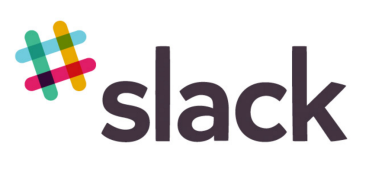Finding an effective way to communicate when you’re working on a team project is challenging. Especially when your team is spread over numerous geographic locations. This has been my dilemma over the past 8 months or so. I’ve been deeply involved in the rollout of the main features of a Learning Management System across three main campuses and two residential campuses. Team members are located in the three main campuses and we’ve really needed to band together to ensure we are all focused on our end goals – training of staff in features new to them, the formation of a training site and associated documentation to support staff, the coordination of the movement of reporting into the system, introduction of the system to students, and parent training sessions (16 of them!).
To get this work done effectively, we’ve really needed to bond well as a team. Valuing each team member’s input, making sure that people are acknowledged for their effort, finding humour amongst the stress – all of this has been critical in helping the team develop shared purpose. We come together when we can, but much of our communication has been via phone calls and email. Traditional stuff. It works, but there are times when we need more instantaneous communication.
Enter Slack.
I created a Slack account in April, added one team member and then looked at it trying to figure out how it might be meaningful for us. I’ve read about Slack at length over the past few months, heard podcasts extolling its usefulness for team collaboration and I sat there staring at hoping the lightbulb moment would come when it would fulfill its promise.
It sat there. Not used.
Enter Newington College and Myles Carrick.
I visited Newington College to see the way Myles has led IT and Digital Teaching and Learning initiatives across the campuses there. It was a great visit, I learnt a lot and was impressed with the leadership Myles demonstrates for his team and the wider school community. Myles opened Slack and showed how he was using it for his team. Bingo! Lightbulb moment. Plane ride back to Melbourne and Sunday night spent inviting team members in the space and creating channels for communication.
Over the last two and bit weeks Slack has become a critical part of of our communication strategy. What helped was a pressure point around the creation of end of semester reports and associated documentation/videos we needed to create to support staff. We had a good reason to be there and so began our Slack conversion.
At Newington I’d seen how Myle’s team use GIFs to lighten the intensity of conversations that happen there. I found an app called Giphy that integrates with Slack. You type /giphy and then a word representing the idea you have and you see what GIF is pulled into the conversation stream. I honestly think the GIFs have made the adoption of this as a communication tool appealing for everyone. Lacing humour into conversation threads lightens our stress levels, and it’s even better when Giphy pulls in a GIF that might not hit the mark – laughter abounds and we can feel the human connection.
We used the todo app to create, of all things, a to do list! Using /todo assign as a command we were able to assign group members tasks that are forming our workloads this week. Slack sends you a weekly email letting you know the activity registered through the channels you have set up. Our intense first week with the pressure point reporting conversations saw the following activity:
Your team sent a total of 407 messages last week (that’s 407 more than the week before). Of those, 93% were in public channels and 7% were direct messages. Your team also uploaded 7 files (that’s 7 more than the week before).
One of the messages I sent was a link to this video from Slack. We were working like this team!
Things have leveled off in the space this week, but I think Slack is going to be a mainstay for communication across our team. It’s definitely a case of Slack in name only, because there’s nothing slack about the way it’s being used to improve communication. Thanks Myles for the lightbulb moment!


Hi Jenny – just came across your blog and really liked this article on the programme ‘slack’. I am a Teacher’s Aide and work on a number of support groups within the School I work at. We find it difficult to get together, make time for meetings, move forward on projects, etc. Would Slack be a useful tool for me to look into further do you think? Many thanks for your time. Cinnamon
My apologies for my late reply Cinnamon. I think Slack is very applicable in school settings – a really important factor is the willingness of the team you are working with to embrace something new. Those averse to change will find this a hard pill to swallow. 🙂